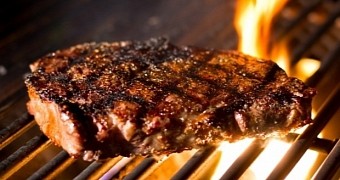Summer is upon us and this can only mean one thing: it's time for meat lovers all across the globe to dust off their grills and get cooking one delicious barbecue after another. Because, you know, there's no such thing as too many grilled steaks.
For those of you wondering what it is about the whole grilling algorithm that makes steaks taste positively divine, here's a video explaining the chemistry behind the perfect barbecue.
The first thing you should know is that red meat gets its color not from blood but from a protein that cows store in their muscles as an oxygen reservoir of sorts and that scientists call myoglobin.
When steaks hit the grill, the heat forces this protein into undergoing a series of transformations. At temperatures over 60 degrees Celsius (140 degrees Fahrenheit), myoglobin loses the oxygen stored in and changes color.
It first turns tan and then, when temperatures exceed 76 degrees Celsius (168.8 degrees Fahrenheit), it turns a pleasant dark brown. And that's how steaks get their mouthwatering color.
Of course, throwing meat on the grill also triggers a series of reactions between the amino acids and the sugars that compose it. It's these reactions that ultimately give steaks and other grilled meats their distinctive flavor.

 14 DAY TRIAL //
14 DAY TRIAL // 